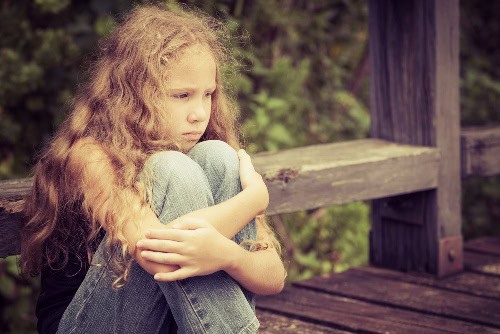12 Important Strategies for Schools to Help Children with Separation Anxiety

|
Getting your Trinity Audio player ready...
|
This article is a follow up from my first article: Strategies for Parents to Help Their Child with Separation Anxiety.
The intro is the same, but as you go further down the article, you will see strategies for schools to use to help children with separation anxiety.
What is Separation Anxiety Disorder?
According the the American Psychiatric Association, a person with separation anxiety disorder is excessively fearful or anxious about separating from the people they feel attached to.
To meet criteria for separation anxiety disorder, a child must have anxious feelings about separating that would not be expected based on their age.
The feelings must persist for at least four weeks and they must cause problems with functioning.
Only a trained professional such as a developmental pediatrician, psychiatrist, or psychologist can diagnose separation anxiety disorder.
What does separation anxiety look like?
A person with separation anxiety may act persistently worried about losing the person closest to them.

They can be reluctant or refuse to go out or sleep away from home or without that person.
They may experience nightmares about separation.
Physical symptoms of distress often develop in childhood, but symptoms can carry through to adulthood.
Children with separation anxiety disorder may be at-risk for school refusal in the future.

Behaviors related to school refusal may include:
- severe emotional distress about attending school (e.g., anxiety, temper tantrums, depression, or somatic symptoms – such as pain or fatigue)
- the child often tries to persuade parents to allow them to stay home
- the child often attempts to conceal absence from parents
- child stays home during school hours because it is safe and secure
- child expresses willingness to do schoolwork and complies with completing work at home
When is separation anxiety typical in children?
Some separation anxiety is typical in young children around three or four years old.
It is common for little ones to cling to parents, cry, and resist when going to another caregiver (e.g., school, daycare, babysitter, etc.).
However, if the anxiety seems severe (in young or older children), in that it is causing extreme distress and interfering with daily functioning, support and intervention is recommended.
12 Strategies for Helping Children with Separation Anxiety in School
Regardless of whether there is an official diagnosis of separation anxiety disorder, there are strategies schools can put into place to assist a child with symptoms of this condition.
These strategies can be done in conjunction with therapy conducted by a private counselor.
You May Also Like: Talk Space Online Therapy
1. Use effective research-based interventions.
These interventions include:
- educating staff and parents on the topic of separation anxiety
- collaboration between parents and school team members regarding interventions and strategies to help children with separation anxiety
- training to increase a child’s independence and sense of competence (e.g., school counseling to build self-esteem and sense of adequacy, positive feedback from school staff and caregivers, opportunities to meet and celebrate small successes)
For more on this research see Separation Anxiety in Children and Adolescents.
Remember to see Part 1: Strategies for Parents to Help their Child with Separation Anxiety
2. Have a trusted, familiar school staff present when the child arrives at school.
Meeting a friendly face when they approach or come into the building will likely reduce some of the initial anxiety and increase feelings of security.

3. Younger children, who are not in kindergarten yet, may benefit from a shorter school day that is increased gradually.

4. Identify a safe place where the child can go to reduce anxiety during stressful periods.
Some children benefit from taking some time to adjust in the counselor’s office or other safe space before going to the classroom.
5. Identify a safe adult to whom the child can go to during times of stress.
This adult should speak to the child with empathy, being understanding of their feelings. However, they should encourage the child to return to their class or activity once they are calm.
6. Review self-calming strategies that the child can use when anxiety arises.

Self-calming strategies may include:
- deep breathing, counting, stretching, muscle relaxation
- holding an object that provides comfort (e.g., picture of parent, favorite item from home)
- drawing a picture, writing down their feelings, thinking of a funny time
- thinking of another time that they had anxiety but got through it and it turned out fine
- reminding themselves that they will be okay
- reminding themselves that they will be going home at a certain time
7. Provide reasonable reassurance.
If a child asks questions like, “will I be okay, is my mom coming back, when am I going home,” it is okay to reassure them, but stay away from reassuring them over and over, as this could just prolong the time they stay away from the classroom or class activity and feed into the anxiety.
You can say something like, I am here if you need me, but I am confident that you will be okay. At three o’clock your mom will pick you up.
If they keep asking questions, seeking more reassurance, remind them that you already reassured them once, and let them know that it is not effective to reassure over and over.
8. Educate children about anxiety.
Talk about what anxiety feels like (e.g., knot in stomach, pounding heart, sweating) so children know how to recognize it when it occurs.
Remind them that everyone experiences some anxiety sometimes and it is completely normal. Some anxiety is good because it is our body’s way of warning us of potentially dangerous situations.
However, sometimes anxiety occurs due to a perceived fear that may be highly unlikely or non-existent.
When anxiety tells us to stay away from non-dangerous situations and causes us to avoid experiences that may actually be good for us, we need to learn coping strategies to get through these times.
Similarly, we need to learn strategies for the times that normal anxiety (e.g. first day of school jitters) becomes so intense that it is hard to focus, get through an activity, or interact with others,
9. Encourage/model small group interactions (e.g., games, art projects, discussions).
Interactions can start with only one classmate. With time, if the child increases their competency, the group may be enlarged gradually.
This is something that can be done in the counselor’s office or when students are paired up with peers for group activities.

10. Give positive feedback for effort.
Notice when your student makes efforts to get through anxiety provoking situations or uses strategies they have learned to cope with anxiety.
You can say something like, “I know you were anxious to come to school this morning, but you were brave when you walked in.”
“I’m proud that you went to the school craft fair and stayed until it was over.”
“You should be so proud of yourself! You calmed yourself down by drawing a picture when you came into class this morning“.

11. Help your student prepare for transitions.
For instance, give your student time to prepare that a change is coming (e.g., in five minutes we will be going to music class, or after math is over we will be working on an art project).
Children with anxiety may be apprehensive to change from one activity to the next, especially if they are unprepared for the change.
A visual timer can help some students understand the passing of time, if they have trouble with understanding the concept of a traditional timer.
12. Collaborate with your students’ parents.
School staff should meet with parents to agree on which supports a child with have in school for separation anxiety.
It is important for parents and the school to handle problems related to separation anxiety in a consistent way using a team approach.
Expectations for how the child copes with their anxiety should be similar in school and at home.
Additional Information About Schools Helping Children with Separation Anxiety
What if a child is refusing to attend school?
If the child is refusing to attend school, assess what may be the trigger for the refusal and work with the child to address the concern if possible (e.g., are there problems with friends, fear of a teacher, etc.?).
If the child will not return to school or if the school feels that a child may need more than they can offer, it is important to discuss these concerns with the parent(s).
A mental health professional such as a child psychologist or developmental pediatrician will likely need to be involved.
What research-based therapeutic treatment programs are effective for helping children with separation anxiety?
When working with a mental health professional, the most effective/research-based non-pharmacological (not involving medication) method for reducing separation anxiety in children is cognitive-behavioral therapy (CBT).
To read more about CBT and how it has effectively been utilized to treat separation anxiety, see Separation Anxiety Disorder in Youth: Phenomenology, Assessment, and Treatment.
Two research-based programs for treating anxiety disorders (inluding separation anxiety) are the Coping Cat Program and the FRIENDS Program.
Should we use home school or cyber school to help children with separation anxiety, who refuse to attend traditional school?
If homeschool or cyber school is utilized for children with separation anxiety, it is important that students’ behavioral and social-emotional needs are addressed through community outlets such as therapy, sports, art, music, groups/clubs, and nature.
We would all benefit from a well-rounded, cultural and social education, in addition to an academic one. If the barrier is anxiety, I think it is one worth pushing past.
The more we know, the more we grow. Knowledge is power.
We can’t run from it out of fear.
Related Article: Evidence Suggests That the Coping Cat Program Reduces Anxiety in Children and Teens
Education and Behavior – Keeping Us on the Same Page for Children!






